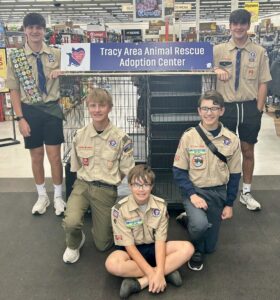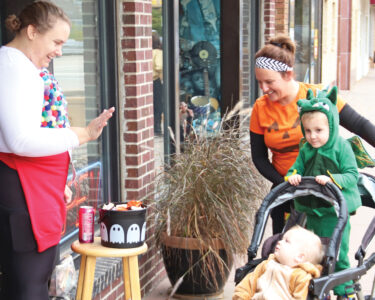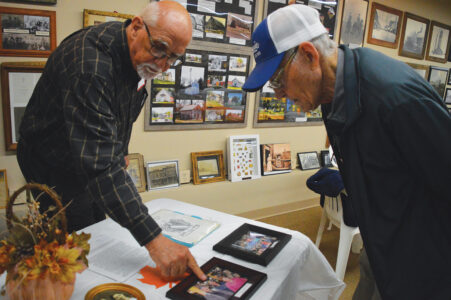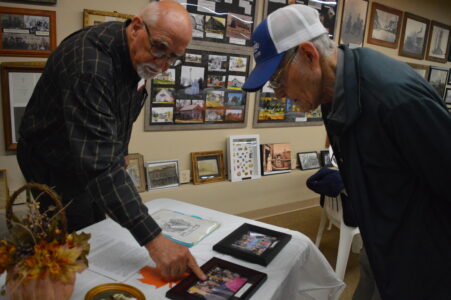Hmong, Laos military veterans honored
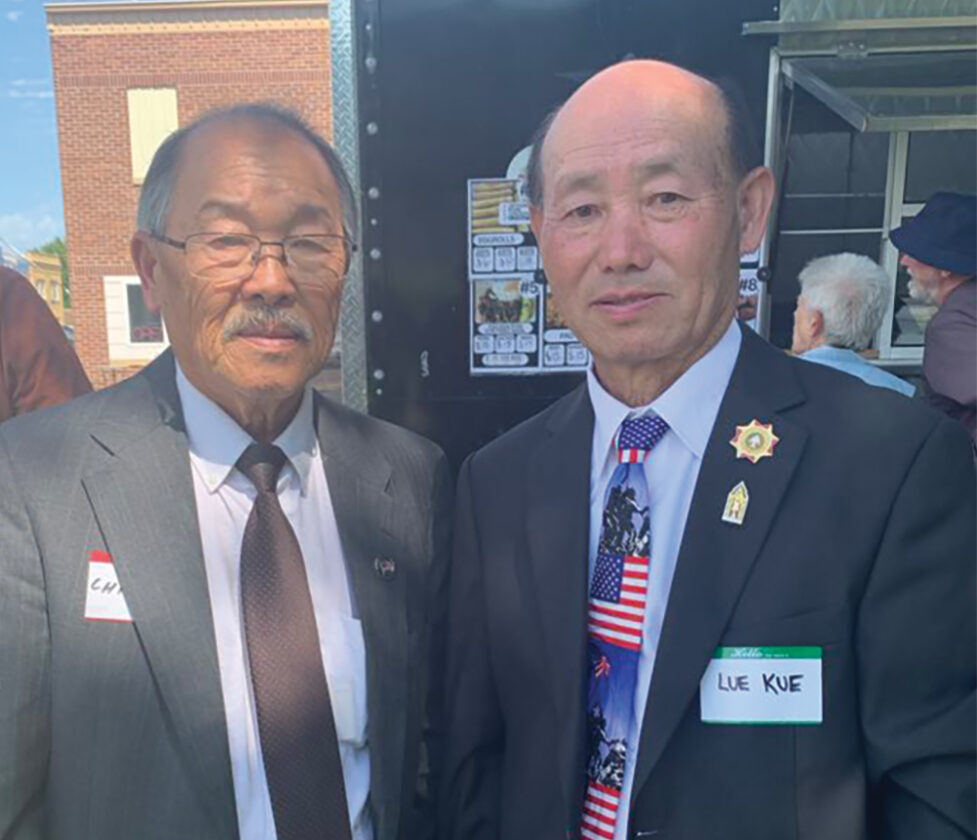
Photo by Sariah Cheadle Chia Lee, left, poses with Lue Kue, a speaker at the event honoring Hmong and Laos military veterans in Walnut Grove.
WALNUT GROVE — Hmong and Laos military veterans of the War in Southeast Asia were honored during a program held at City Park on Saturday.
In the 1960s and 7’0s the United State’s CIA recruited around 30,000 Hmong in Laos to help with the war against communism in Vietnam.
Following the end of the Vietnam war and the withdrawal of U.S. troops in 1975, many Hmong were heavily persecuted, and so they sought to leave Laos and began immigrating to the United States.
The Hmong involvement was labeled as “The Secret War” and therefore the war veterans who arrived here were left unacknowledged for many years.
This event was a recognition of those veterans and their families who have liven in the U.S. for the last 50 years.
The event began with a performance by the SW Nkauj Dancers, a group of young girls who dance with traditional Hmong steps. They wore elaborately patterned skirts and jewelry that jingled along to their movements and the music.
Walnut Grove Mayor Ron Stubbe welcomed everyone to the event before inviting city councilman Yeng Yang to the stage.
Yang was born in a refugee camp in Thailand before his parents migrated to Texas in the ’90s.
He spoke of that migration pattern, noting that in 1975 about 3,000 Hmong refugees were allowed into the country, and now there are close to 300,000 Hmong in the United States.
“Hmong people care about freedoms” Yang said, “at the end of the day we will hold that flag proudly and defend it against invaders.”
The following speaker, Lue Kue, was himself a veteran of that “Secret War” and was an early emmigrator to the U.S, arriving in 1976. He now lives in Tracy.
Kue shared it “doesn’t matter which country you live in, it’s which country you will serve and fight for.”
Remarks were then read from U.S. Sen. Tina Smith who could not attend: “The legacy of Hmong and Lao veterans is one of strength and resilience,” Smith wrote, “with many who made it back home continuing to serve our communities here in Minnesota.”
State Senator Tou Xiong, son of Lao refugees, a lawyer and representative from District 44, then spoke of the great feats performed by these soldiers who “couldn’t read, (and) barely knew how to ride a bicycle.”
These Hmong soldiers were experts in the land around them, and of the mountains. Xiong said.
“Americans said (the Hmong people) need to learn to jump out of helicopters,” he said.
And they did. They became integral to the operations performed against North Vietnam.
Xiong said that although the war in Vietnam was not a success, they celebrate not because they lost something but because “we gained a new country.”
Nancy Gertner of the Minnesota DFL Veterans and Military Families Caucus then spoke, sharing her own military history in the Navy, and her pride in the way the U.S. helped its allies “live their lives in freedom.”
She spoke of how immigration has played a role in the lives of so many Americans, citing her grandparents who left Russia and moved to a farm site near Cottonwood 149 years ago this year, land that family still lives on.
After the closing remarks, attendees lingered, enjoying some lemonade or a free egg roll from the MGLX food truck.
“It just gives us the time frame of how long we’ve been in the states and the sacrifice that the parents (have) done to the kids to get to this point,” Yeng Yang said.
“We contribute to the community,” he says.
Yang’s father, who has since passed away, was a veteran in the war in southeast Asia. He served as the bodyguard for a colonel.
Yang said that his dad would be very pleased to know Hmong veterans are getting this recognition. While he never liked to speak in length about the war itself, he spoke often about not being recognized, seeming to feel the war was an almost “sacred” thing.
Minnesota has a high population of Hmong, second only to California, constituting 1.2% of the state’s population concentrating in the cities, as well as in the Tracy, Walnut Grove area.
At its peak in the early 2000s, about half the population of Walnut Grove was of Hmong descent.
Local historian Dan Peterson shared this influx of immigrants “saved the school system” as though Westbrook and Walnut Grove combined to create one school system, no buildings had to close to do so thanks to this immigration pattern.
Peterson said that “many people don’t know the story of the culture” and hopes that events like this one will help bring more awareness.

